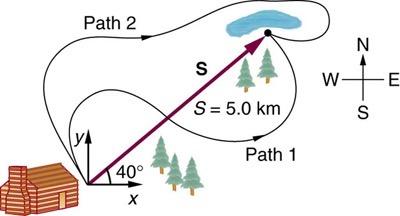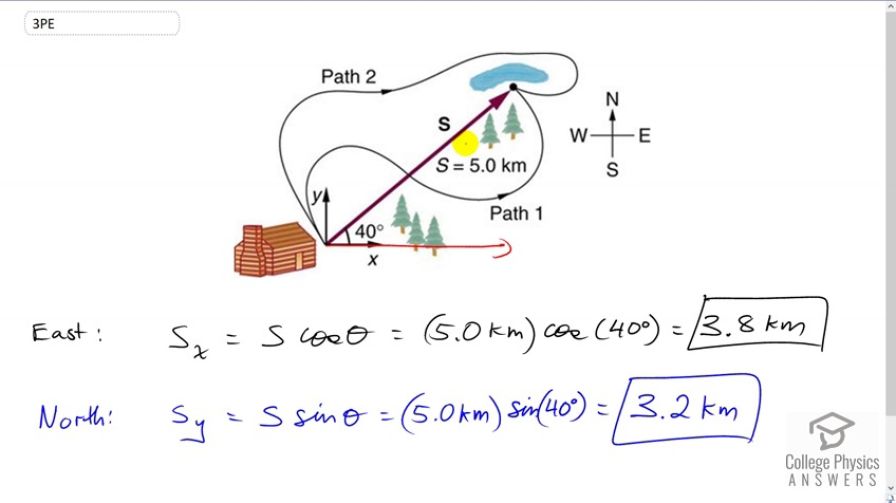
East:
North:
Solution video
OpenStax College Physics, Chapter 3, Problem 3 (Problems & Exercises)

Calculator Screenshots
Comments
Wouldnt we use cos for north since it covers adjacent and hypotenuse? Can you explain the logic behind knowing when to use sin or cos
you are talking about SOH CAH TOA right now which deals with sides. We only have one side and one angle, that angle is not 45 degrees so y and x aren't the same which means we will need to use sin and cos. If you want to understand this you should take trigonometry unit circle on khan academy. sin and cos are just a way of determining what coordinates in a circle does a line represent. In this case the line is 5 units and the angle is 40. In a unit circle( 1 unit radius) sin(90) = 1, sin(270) = -1, cos(0 or 360) = 1, cos(180) = -1 . It's really just a coordinate plane. So if the radius is 5 then 5cos(0) for example is equal to 5. If you still don't get it I highly suggest you take a trig coarse you only need algebra 2 to understand it.

